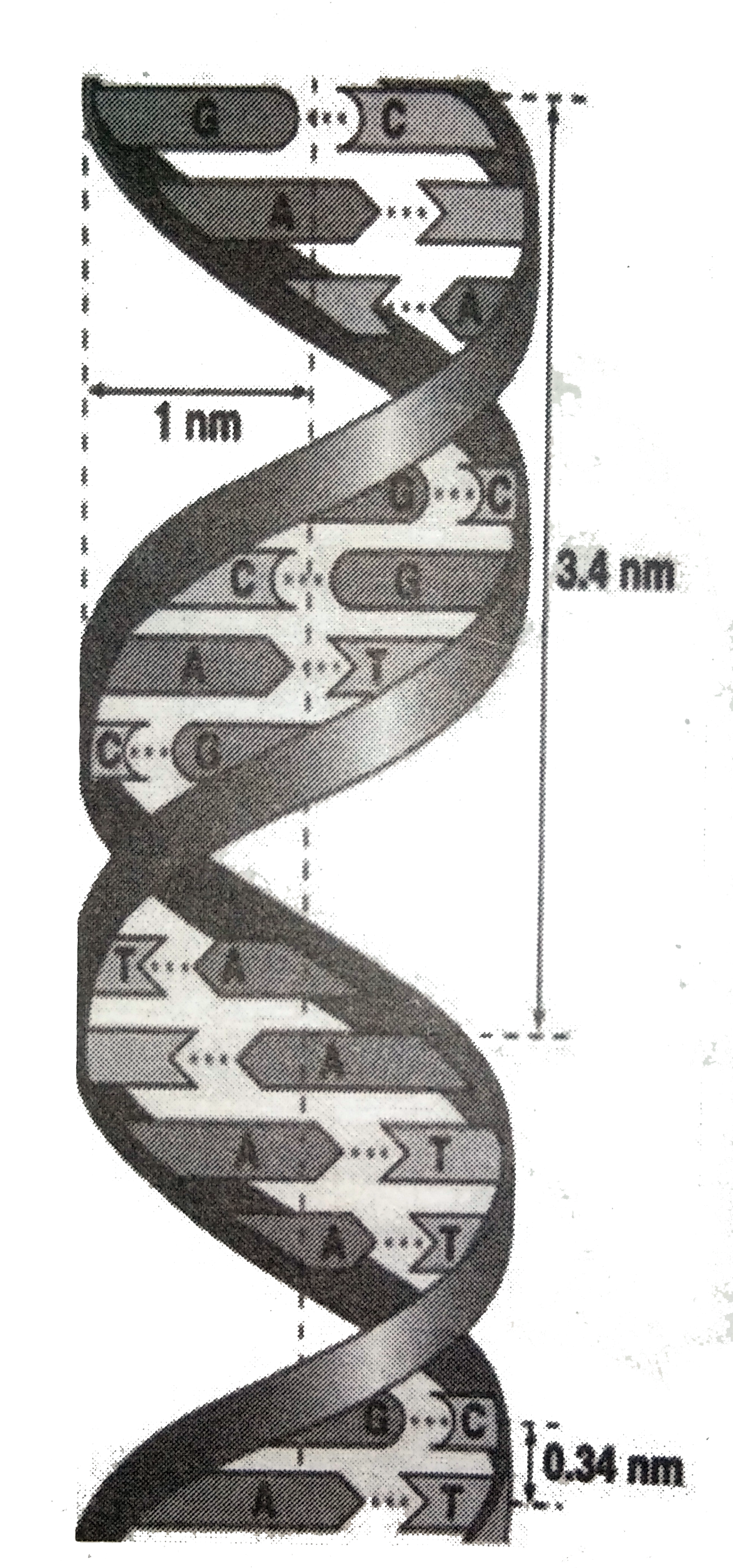How is the structure of DNA organized? What is the biological significance of DNA?Solution in Tamil
DNA is the heridetary material, as it contains the genetic information. It is a large molecule consisting of millions of nucleotides, so it is called a polynucleotide. Each nucleotide consists of three components.
(a) A sugar molecule - Deoxyribose sugar
(b) A nitrogenous base - There are two types of nitrogenous base in DNA they are
(i) purines (Adenine and Guanine)
(ii) Pyrimidines (Cytosine and Thymine)
(c ) A phosphate group - The poly nucleotide chains from a double helix, Nitrogenous bases in the centre are linked to sugar-phosphate units, which form the backbone of the DNA. Pairing between the nitrogenous bases is very specific and is always between purine and pyrimidine, linked by hydrogen bonds.
Adenine (A) links Thymine (T) with two hydrogen bonds [A=T]. Cytosine (C ) links Guanine (G) with three hydrogen bonds (C≡G). The hydrogen bonds between the nitrogenous bases make the DNA molecule stable. The nucleotides in a helix are joined together by phosphodiester bonds.
Biological significance of DNA:
(i) It is responsible for the transmission of heredity information from one generation to next generation.
(ii) It contains information required for the formation of proteins.
(iii) It controls the developmental process and life activities of an organism.

Topper's Solved these Questions
- BOOK - FULL MARKSCHAPTER - HEREDITYEXERCISE - TEXTUAL EVALUATION SOLVED (HOTS)3videos
HEREDITY
- BOOK - FULL MARKSCHAPTER - HEREDITYEXERCISE - TEXTUAL EVALUATION SOLVED (VALUE BASED QUESTIONS)1videos
HEREDITY
- BOOK - FULL MARKSCHAPTER - HEREDITYEXERCISE - TEXTUAL EVALUATION SOLVED (SHORT ANSWER QUESTIONS:)8videos
HEREDITY
- BOOK - FULL MARKSCHAPTER - HEALTH AND DISEASES EXERCISE - Additional Questions (Higher Order Thinking Skills (HOTS):)1videos
HEALTH AND DISEASES
- BOOK - FULL MARKSCHAPTER - NERVOUS SYSTEMEXERCISE - VII. ADDITIONAL QUESTIONS (HOTS).5videos
NERVOUS SYSTEM
Similar Questions
Flowers of the garden pea are bisexual and self-pollinated .Therefore ,it iks difficult to perform hybridization experiment by crossing a particular pistil with the specific pollen grains.How Mendek made it possible in his monohybrid and dihybrid crosses?
02:09View SolutionUnder which conditions does the law of independent assortment hold good and why?
02:08View SolutionWhy did Mendel select pea plant for this experiments?
11:35View SolutionWhat does the following symbols represent?
 02:36View Solution
02:36View SolutionGive two examples for conditional reflexion.
01:41View SolutionExplain the significance of satellite DNA in DNA fingerprinting technique.
View SolutionHow does DNA express its biological information?
View Solutionडी.एन.ए की संरचना का वर्णन कीजिये। डी.एन.ए अनु में द्विगुणन किस प्रकार होता है?
04:35View SolutionDNA के वाटसन-क्रिक मॉडल के जैविक महत्त्व की व्याख्या कीजिए।
04:35View SolutionThe biological scissors of DNA are ……….. .
02:43View SolutionExplain what is DNA fingerprinting? What is the significance of this technique?
01:31View SolutionThe biological scissors of DNA are _____
01:33View SolutionHow is the structure of DNA organized? What is the biological significance of DNA?
02:23View SolutionHow is the structure of DNA organized? What is the biological significance of DNA?
01:53View Solutionwhat are biological significance of DNA.
01:37View Solution

